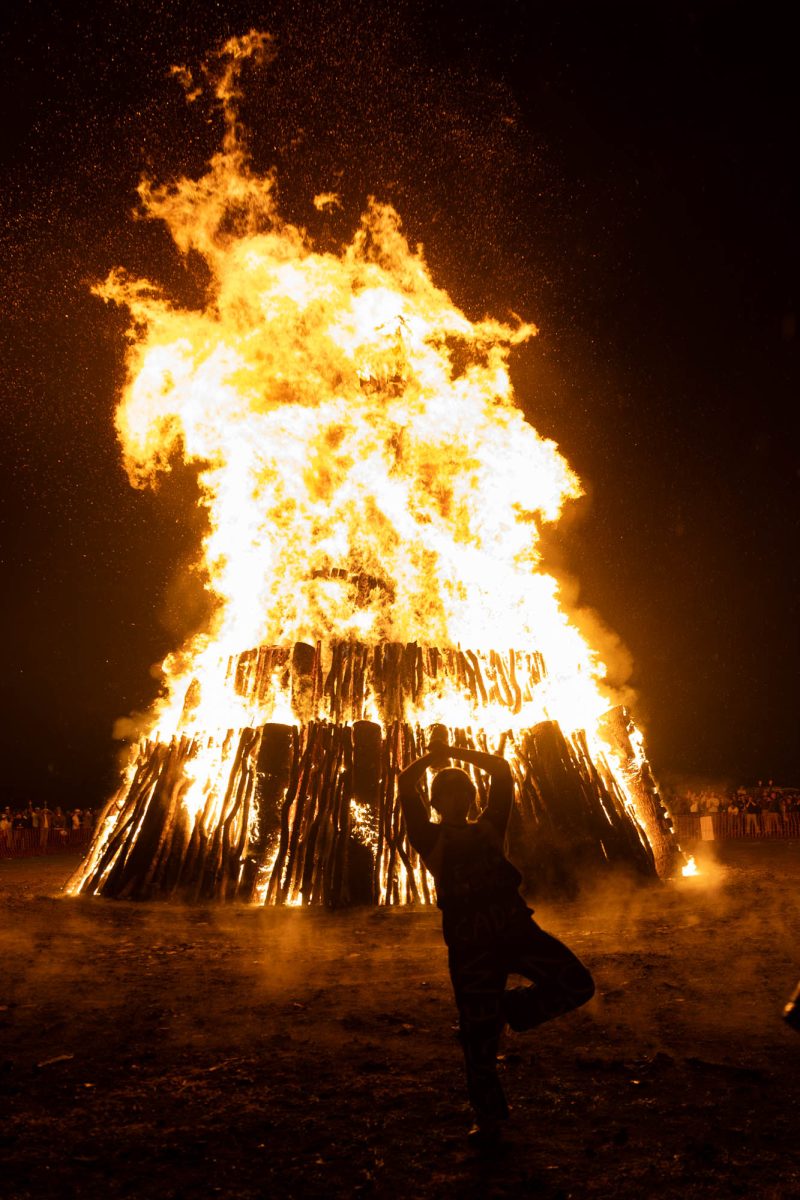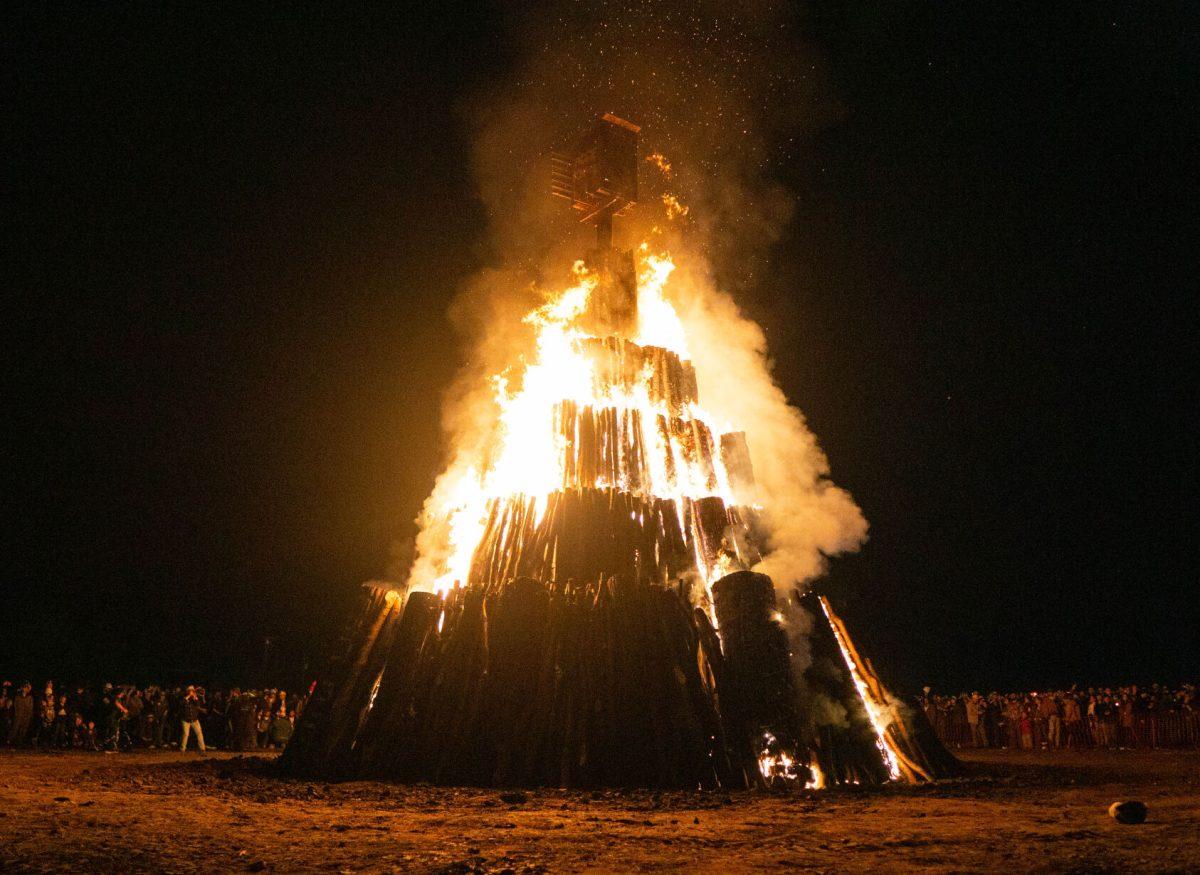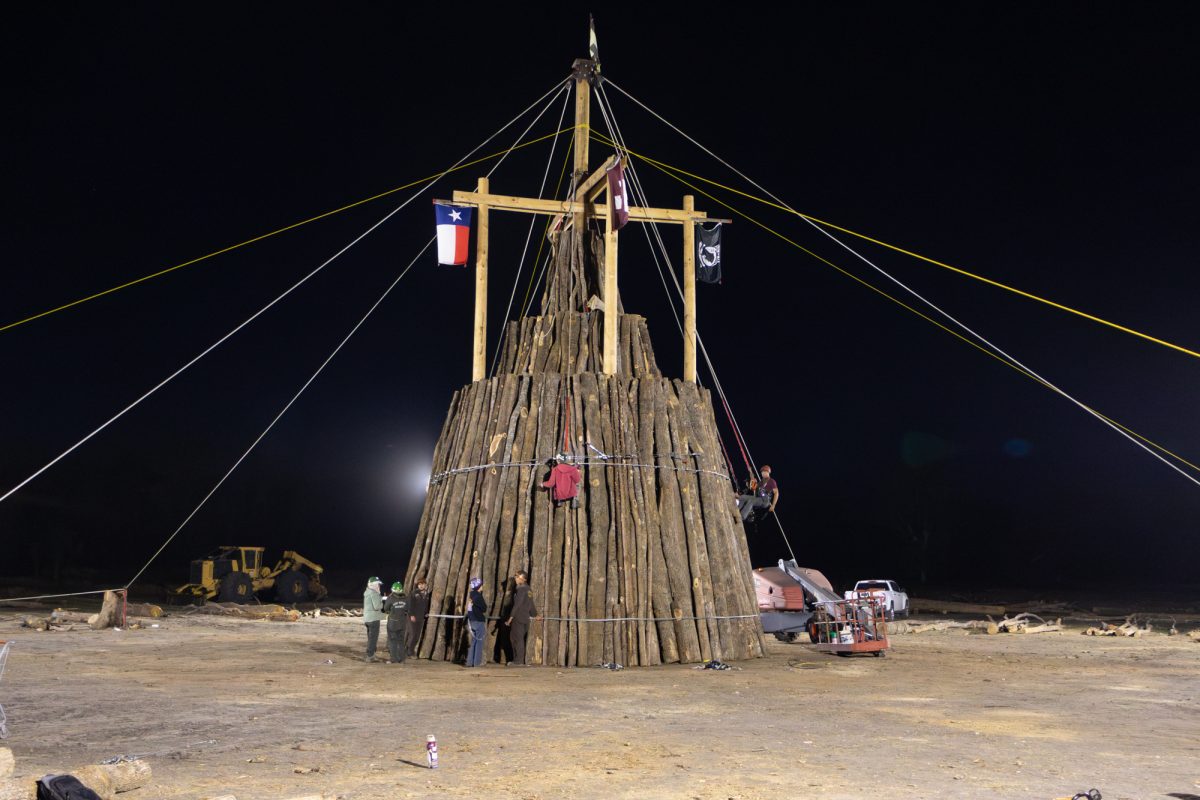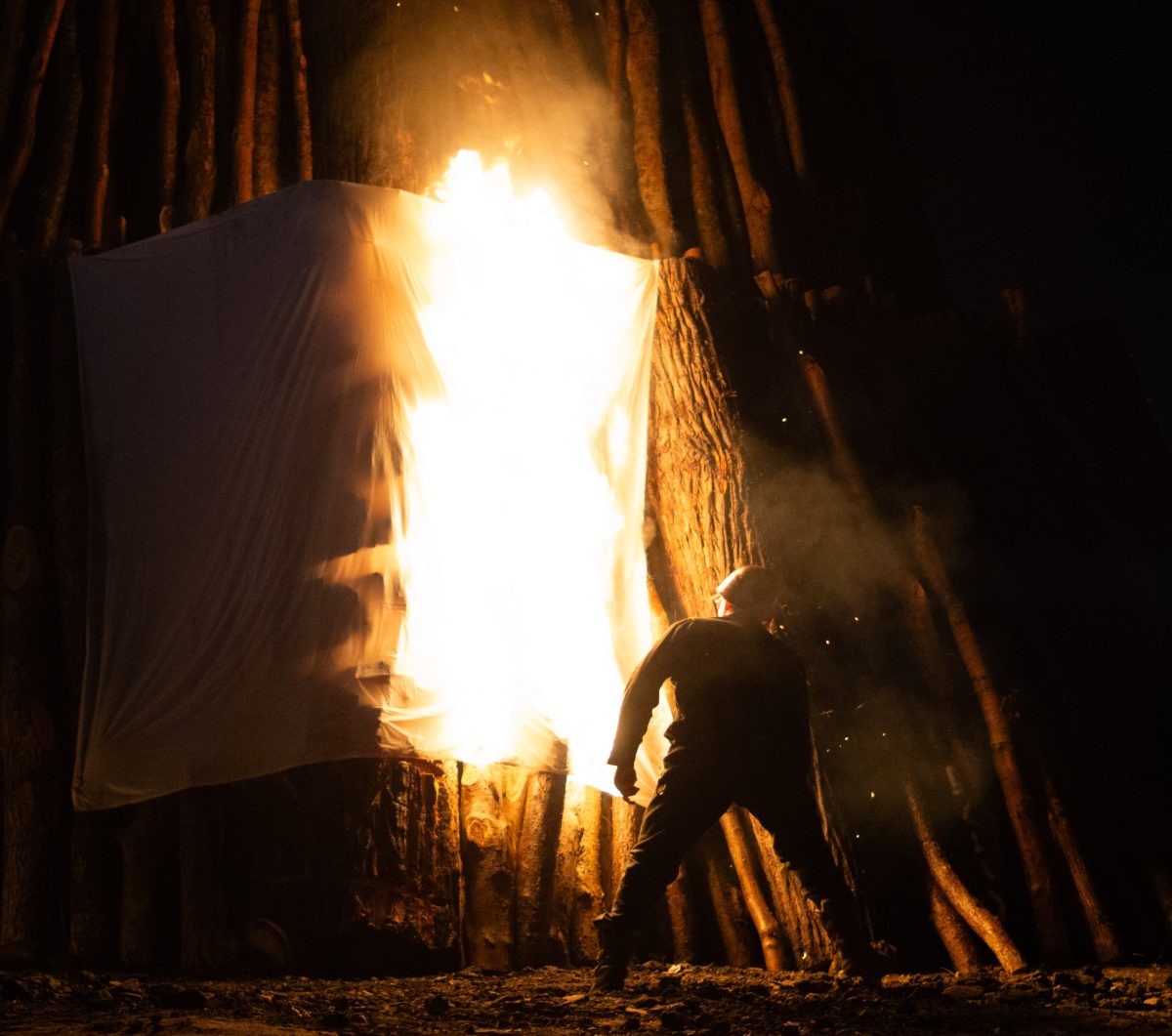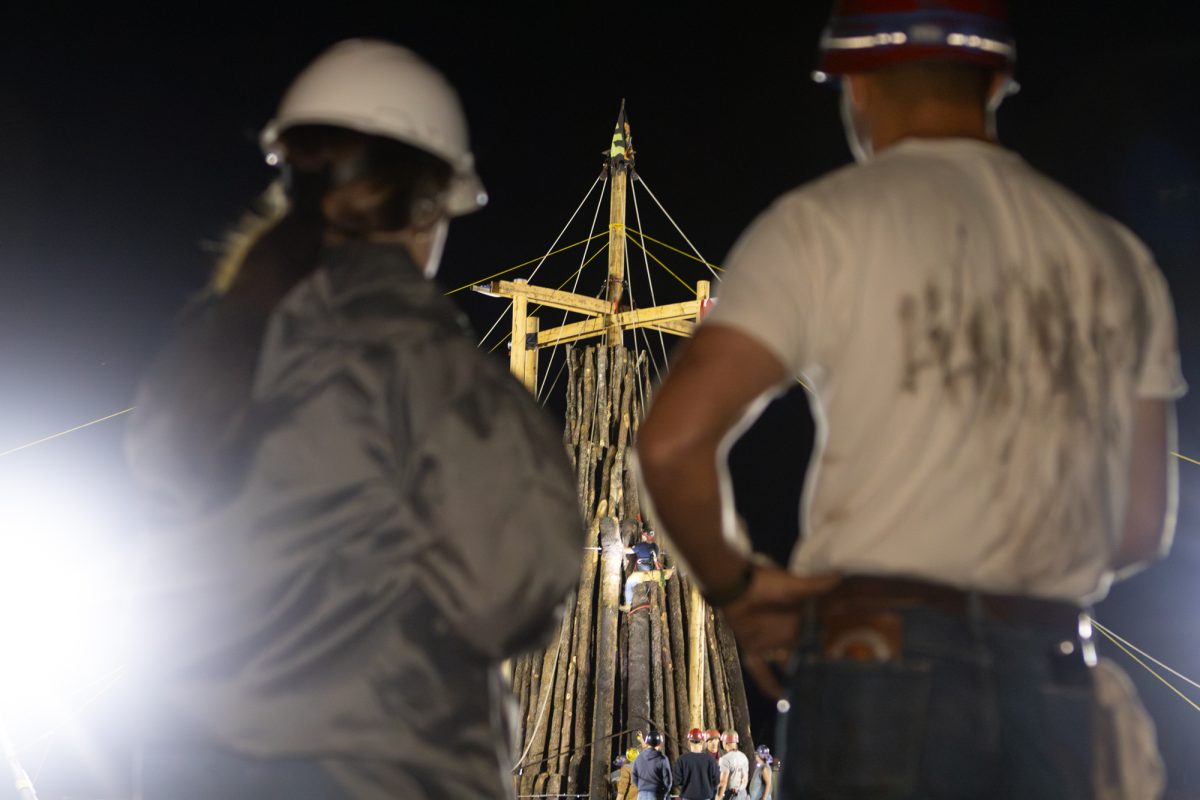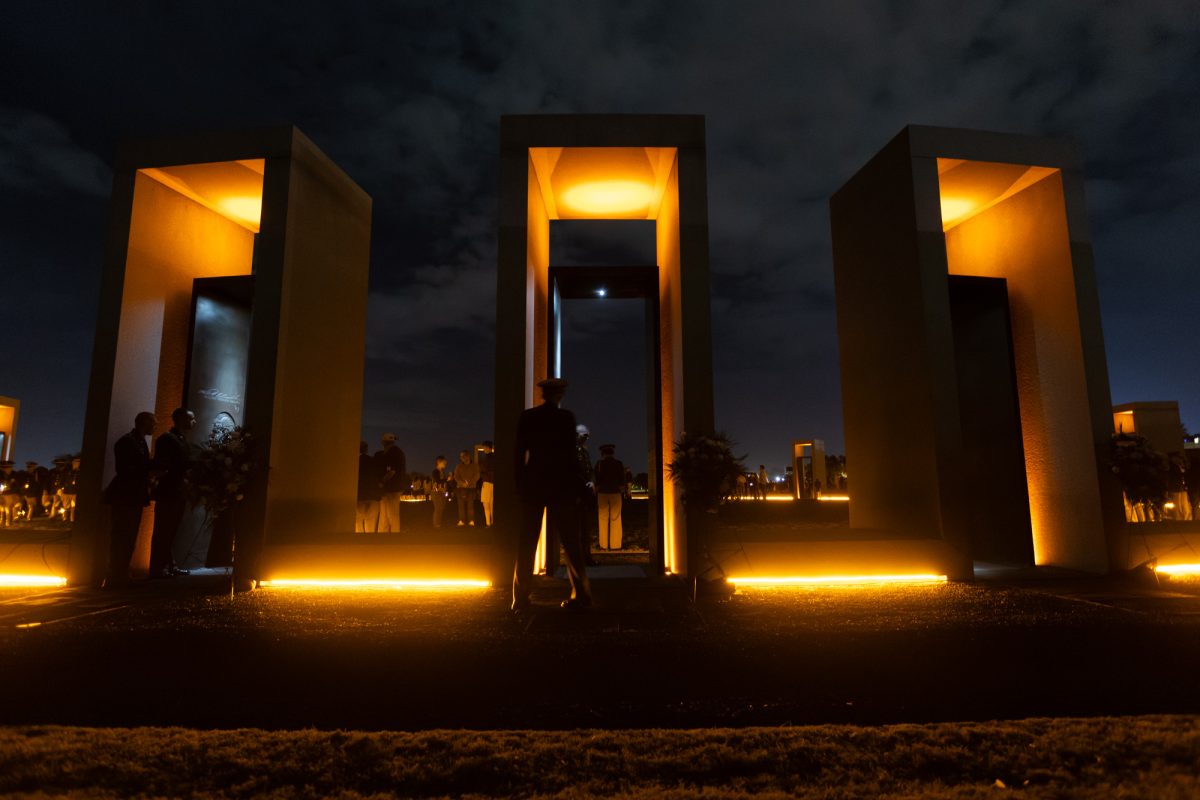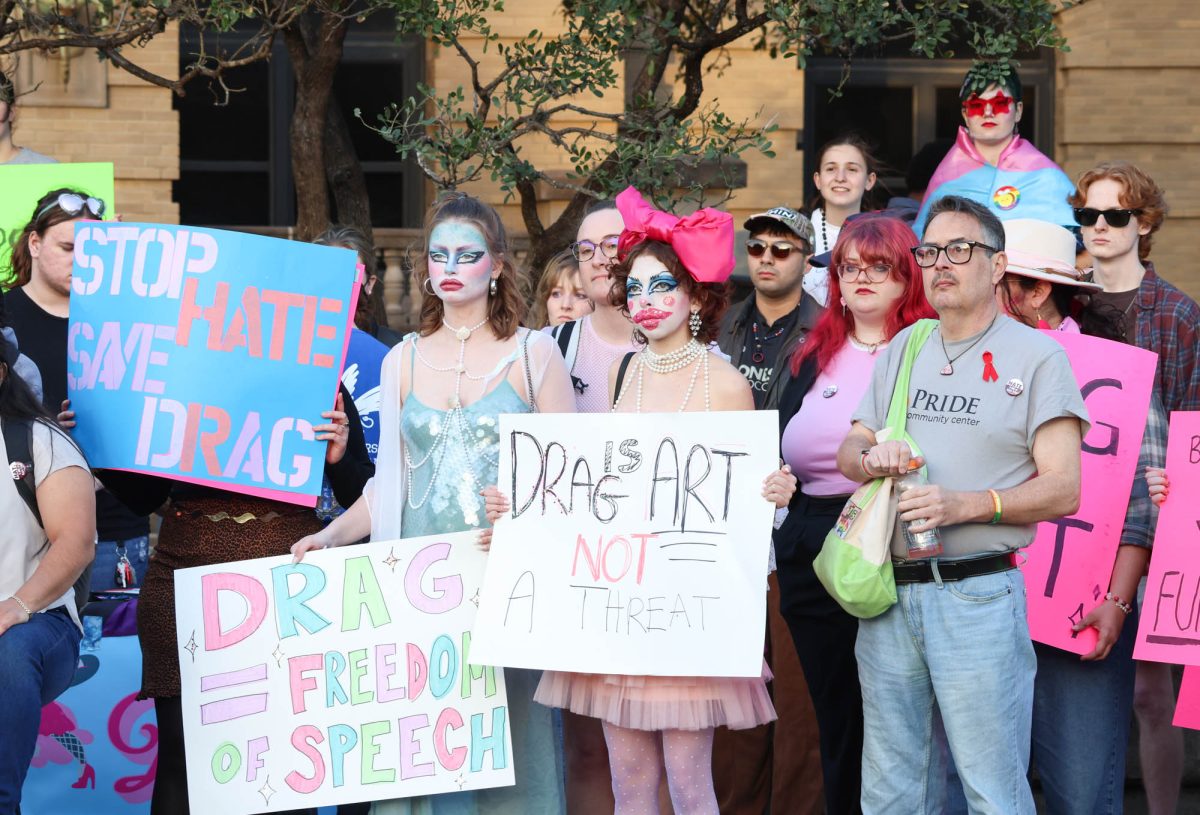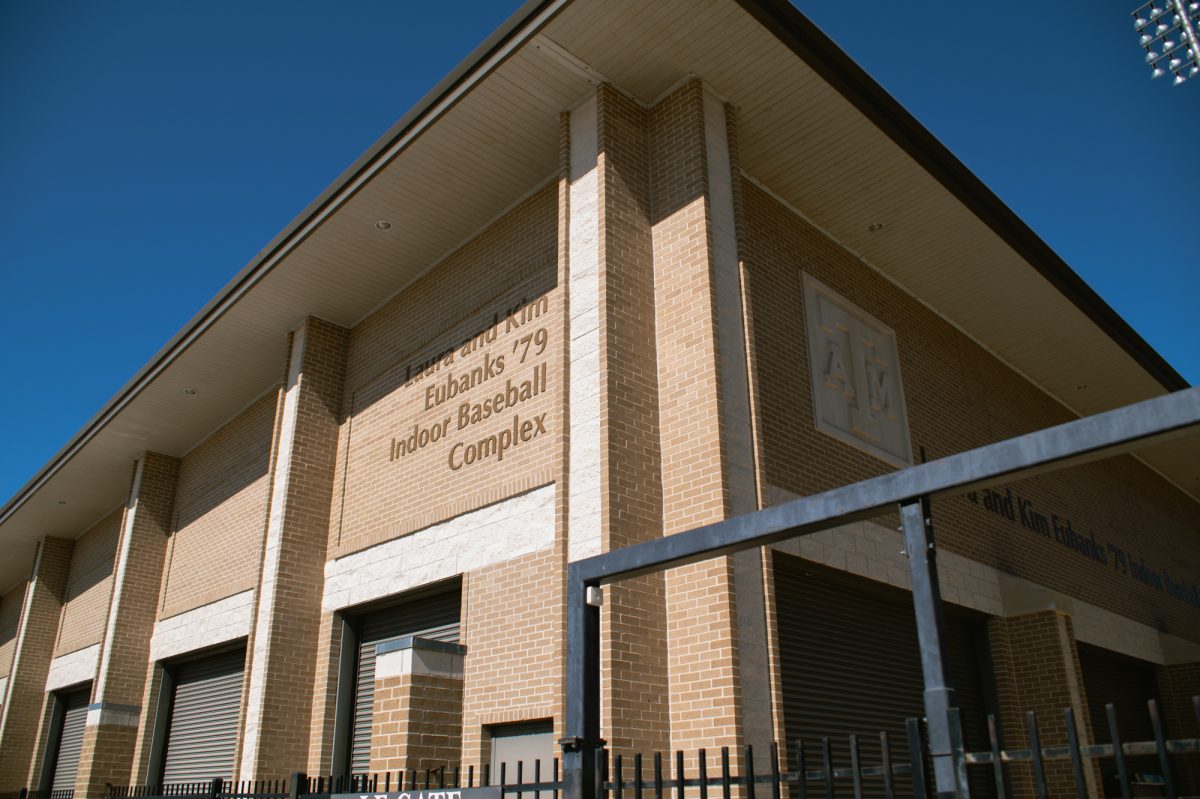When creating sand mandalas, Buddhist monks create elaborate designs out of colorful sand. They sculpt every minute detail to symmetrical perfection, and when it’s done, without words, they simply sweep the sand into a meaningless mixture and bottle it up.
For Student Bonfire Board Member Dion McInnis, this example is a means of trying to do the impossible — explain what it’s like to work on bonfire to those who have never participated in it.
“I don’t think anybody at bonfire would necessarily think of this as being so zen, but its pretty zen,” McInnis said. “It’s really zen. You burn it down, it’s over. Then, you just start again. Now it’s all empty again, what do you do? You got to build another one.”
For many of the students who wake up before 6 a.m. on weekends to build Stack, describing bonfire culture starts with a description of how bonfire is built and ends with something along the lines of, “You had to be there.”
How it’s made
Bonfire is scheduled to burn Wednesday night at the Stack location on the outskirts of Bryan, but every year organizers began planning bonfire in the spring with a simple win-win sales pitch to landowners looking to clear a plot of land. The students offer to clear the land for free with axes, a way that is “greener” than using machinery, and in turn, bonfire will have the lumber it needs to make Stack possible, said Andrew Pekowski, a redpot, or a lead organizer.
“We like to say that the next bonfire begins as soon as the first one burns, so we start working from day one then,” Pekowski said. “We do all our fundraising in the spring, and we find our next cut site in the spring. We usually get contacts from either the old landowner or we put out some ads in the paper for free tree removal.”
The make-up of the wooded area organizers are able to get dictates the shape of Stack, McInnis said.
“The woods that they were in this year had a large number of these big beautiful 32-footers at the center,” McInnis said. “In the past, you might only get a couple dozen 32-footers, so the top is pretty skinny. That’s a lot of tall trees, so it’s got a real nice look this year.”
After giving students a few weeks to adjust to the new school year, Student Bonfire begins cutting down trees at the designated cut site by mid-September, Pekowski said.
“We cut every single weekend, and we kind of go off the football schedule,” Pekowski said. “On home games, we cut on Sundays. On away games, we cut on both Saturdays and Sundays.”
Each dorm crew chops down trees in its designated section, making the event a catalyst for inter-dorm quality time, said Ryan Anderson, member of the Schumacher Crew. Anderson said cutting down trees is typically more physically demanding, but Stack is more time consuming.
The last trees chopped down are dorm logs. Legett Crew Chair and animal science sophomore Kathy Modrow said this log is made of the biggest tree a dorm can find and chopped to be 10 feet long.
“Everyone has their own dorm log,” Modrow said. “It’s the biggest tree you cut down and the last tree you cut down in the season. You carve your symbols in it. You cut down your own tree. Only your dorm is allowed to touch it to move it.”
These logs are among the last to become a part of Stack and are ceremoniously turned inward when placed.
“They turn it in because bonfire is not about being noticed,” McInnis said. “It’s not about you. You know where your log is. You know what it looks like, but nobody else does.”
One of the first tasks at the Stack site is to bury the center pole 15 feet in the ground, a process McInnis said takes eight to 12 hours during which they dig a hole three times as wide as the pole.
“So when they go to fill that in, they are filling that in a couple shovelfuls at a time, a splash of water, then you fill the pole and you tamp, tamp, tamp,” McInnis said.
Pekowski said the center pole is a 60-foot untreated pine pole donated by a company. Pekowski said a perimeter is set up around the center pole and only certain people with protective head gear are allowed within that parameter.
“Once the poles are in the ground, we have four support poles called windle sticks that separate the bonfire into quadrants that are just for extra added support,” Pekowski said. “Then we’ll spend the next night doing that. Once the four windle sticks and center pole are in the ground, we can officially begin Stack.”
The process of building Stack involves crew chiefs calling for members of their crew to bring logs to the quadrant that is ready for a log.
“Then all the little knobs and limbs will be chopped off the tree, so it’ll be a nice smooth tree that you can place easily,” Pekowski said. “When the tree is ready to be cleaned, the yellowpot, the person in charge of that quadrant that night who mediates between redpots and brownpots, places a rope around it, like a pulley rope, and then there will be student on the other end of the rope pulling the log up.”
Pewkowski said that while students are pulling, other students are guiding the log.
“There’s a man in a swing in every quadrant whose job is to wire [the log] as soon as it hits the stack,” Pekowski said. “So, it’ll get slammed onto the Stack then the swing man will jump on and catch the log and then they’ll twist it or place it accordingly, wherever it needs to go, you know sometimes it’s twisting for a couple minutes to make sure it fits very well.”
Once a redpot signifies approval of the placement, the log will be wired in at three different places on top and three different places on bottom.
“It’s the same process with every single log, it gets pretty monotonous,” Pekowski said. “Over and over again.”
One of the last additions to the bonfire is the famous outhouse placed on top by crane, which is created by cadets in the Fightin’ Texas Aggie Band, although the participation is not sanctioned by the university or the Corps of Cadets.
McInnis said the first outhouse after the 1999 Aggie Bonfire Collapse was built in 2003, and was too large, fitting six men. McInnis said the Aggies involved in the earlier 1990s models came back to help the new students construct proportional and more effective outhouses.
Passing the torch
For many in bonfire, the tradition is ever-evolving.
The first bonfire after the collapse was in 2002 and consisted of a pile of brush smaller than any brush pile created by today’s bonfire students when clearing a wooded area, McInnis said.
“When bonfire first began, they called it a trash pile, so we called ours a trash pile in the beginning off-campus,” McInnis said. “It was a big jump from that to a Stack, but then that was kind of fun too. I mean, that’s what’s fun about being involved in this. Bonfire evolved over a 100 years to become what it was and 90 years to go through all of those changes, changes in design, changes in profiles and all that. Took all that time and we just kind of re-lived the entire life cycle in a decade.”
Part of this evolution involves the increased safety measures in response to the collapse.
“I mean, it’s very hard to describe Student Bonfire without mentioning the collapse, because a lot of what Student Bonfire has become is defined by, I wouldn’t say paranoia, but our fear of what happened in ’99 and making sure that it doesn’t happen ever again,” said Zach Price, interdisciplinary studies sophomore and Schuhmacher Crew chief. “Every time I go home my parents and grandparents always ask me, ‘Why did the collapse happen in ’99?’ I always have to explain to them the physics that happened.”
Scott Coker, chairman of the Student Bonfire Board, said while there have been 10 bonfires since the collapse, one or two students per year still ask him how today’s bonfire measures up to older bonfires.
“I’ve been telling them for the last few years, ‘Look, y’all have been doing this long enough that you’re your own thing, quit worrying about that,’” Coker said.
From the grassroots
Many of the students who are working on bonfire today were roped into participation through grassroots recruiting in dorms.
Bonfire recruiting works on the motto “adapt or perish,” said Malcolm Webb, English junior and former brownpot, another type of bonfire organizer. Without university recognition, members of bonfire look to their dorms for comrades, Webb said.
“It really builds dorms,” Webb said. “You look at all the Northside dorms and how close knit they are. It’s really great. They go to dorm dinner together, they eat together, they study together, they share their life problems with each other.”
A few years ago, Brian Okosunm, poultry science junior and former Walton Crew chair, fell in love with bonfire from day one. He said Walton’s bonfire crew was the oddest group of guys he had the pleasure of meeting freshman year and that his entire college experience would have been different if he lived in a different dorm.
“They took me in and they showed me the ropes of being a freshman at A&M, the tradition within the dorm was rich and powerful, I loved it all,” Okosun said. “Walton became my route to bonfire from there on and two years later I’m still heavily involved, missing only one day of bonfire since my freshman year.”
For Price, the experiences participating his first year in bonfire drove him to pass on such experiences.
“What keeps me going is I want to pass that on to freshmen and, you know, the next year’s freshmen and class of 2020 and class of 2021 or whatever,” Price said. “I want them to have that same experience I had when I came in as a freshmen, not knowing a single person or not knowing if I’d have any friends, but these random people accepted me for who I was and then made me feel safe and secure and think I have a home here. I just want people to have that same feeling and the act of building bonfire is really just the vessel.”
Garnering such support within the dorms brings people from different walks of life to bonfire. Webb, a self-described “city boy,” said he learned the value of hard work through bonfire at A&M. For Joe Shepherd, international affairs graduate student and former yellowpot, part of the appeal of bonfire is connecting with his roots in Georgia.
“For those of us who grew up in rural areas, it’s kind of a way to get back in the woods and out in the open on the weekends, get some hard physical labor in,” Shepherd said. “It’s a break from school, just a unique atmosphere and culture.”
Having spent three years in Student Bonfire, Shepherd said some things change depending on the people participating that year, but the spirit holds constant.
“There are little things that might change, but in a way, it’s kind of frozen in its own bubble,” Shepherd said. “The spirit of things stays the same, the dedication to the work, it’s devotion to traditions, even senseless traditions.”
Burn: hard work in flames
When the time comes to burn, many see it as a culmination of all the work done in bonfire.
“Bonfire is the only situation in the world where when all your hard work goes up in flames, there’s nothing but euphoria,” Webb said. “[Bonfire is] to make room for the next one, because once you build it, this big thing is in the way of us building another bonfire.”
Price said his first burn as a freshman stuck with him as an Aggie.
“It signified another year where one of Aggieland’s old traditions stayed alive. You know, we kept the tradition alive at least one more year, and it really meant a lot to me, because I knew that I had helped participate with hundreds of others to build a 40-foot, multi-ton stack of logs.”
McInnis said the best part of Burn isn’t necessarily the wood going up in flames.
“As a student who worked on it, you light it and you look at it for a minute, then you look around and you look at everyone else who has come to see it, and that’s such a good feeling,” McInnis said.
Fuel for the Aggie spirit: Wednesday’s bonfire burn marks the conclusion of a season’s work
November 25, 2014
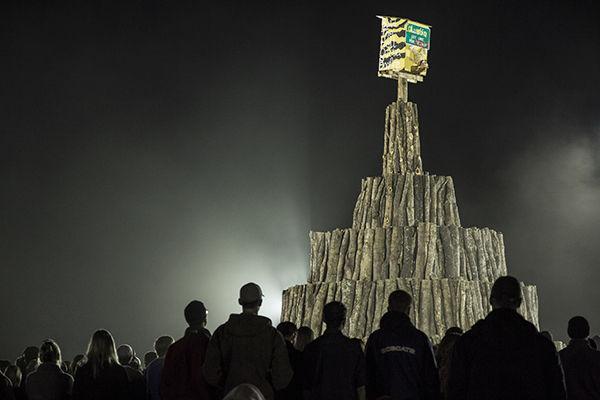
Photo by Chase Krumholz
FILE
Crowds gather before last year’s Stack on burn night.
0
Donate to The Battalion
$1765
$5000
Contributed
Our Goal
Your donation will support the student journalists of Texas A&M University - College Station. Your contribution will allow us to purchase equipment and cover our annual website hosting costs, in addition to paying freelance staffers for their work, travel costs for coverage and more!
More to Discover




